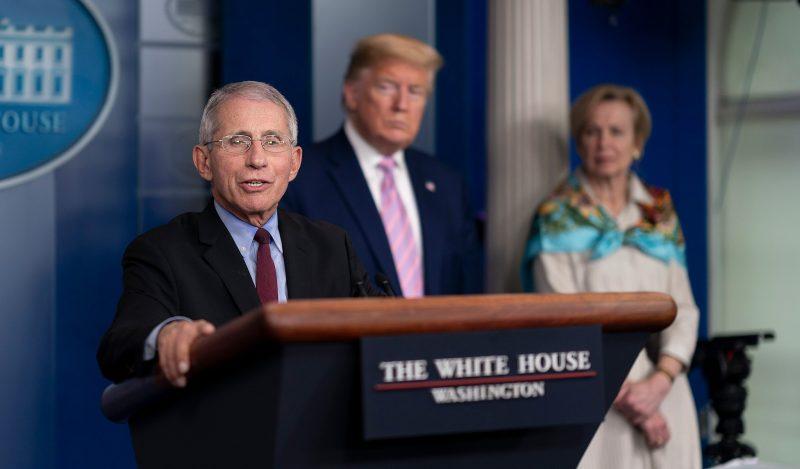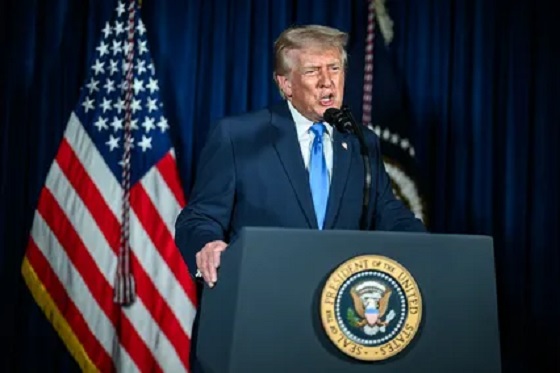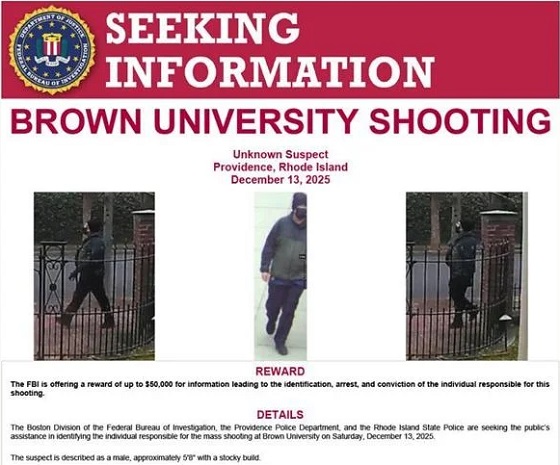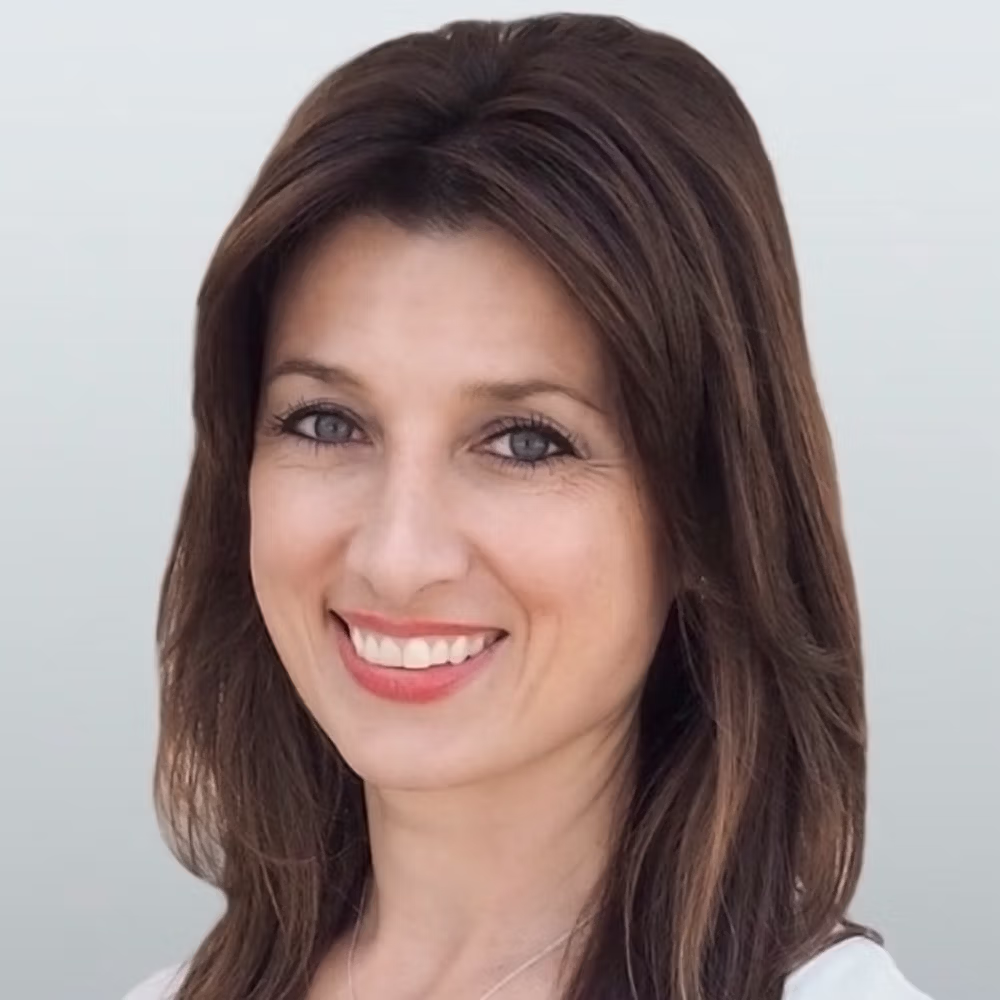Brownstone Institute
Top Ten Quotes from the NYT Fauci Interview

From the Brownstone Institute
BY
Billed as the most in-depth interview yet, the New York Times published a very long piece that contains some rather startling admissions, claims, and defenses from Anthony Fauci, the face of lockdowns and shot mandates.
The author and interviewer is David Wallace-Wells, who before (and now after) Covid specialized in writing about climate change, invokes every predictable trope. So there was a sense in which this interview was a lovefest between the two. Still it netted some interesting results.
Here are my top-ten picks of Fauci quotes.
1. Fauci: “Something clearly went wrong. And I don’t know exactly what it was. But the reason we know it went wrong is that we are the richest country in the world, and on a per-capita basis we’ve done worse than virtually all other countries.”
This seems promising but one quickly realizes that there is an axiom among the people responsible for lockdowns. They were completely correct in their thinking. The problem was not enough centralization, prior planning, or resources. Also there was too much disinformation and non-compliance, leading to a low vaccine uptake compared with other countries. The vaccines are the miracle and the greatest achievement of the pandemic, a point on which they admit no argument.
This is also the conclusion of a thing called The Covid Crisis Group (funded mostly by the Charles Koch and Rockefeller Foundations) which has released the new book Lessons from the Covid War: An Investigative Report. There is no PDF. You have to buy it. The lead author is the well-known fixer Philip Zelikow, who wrote the 9-11 Commission report. Included among the team is none other than Carter Mecher, who bears more responsibility for school closings than anyone else. Also there is Rajeev Venkayya, the one-time Bush administration official who is widely credited with having invented the very concept of lockdowns.
It’s their story and they are sticking to it.
2. Fauci on vaccine mandates: “Man, I think, almost paradoxically, you had people who were on the fence about getting vaccinated thinking, why are they forcing me to do this? And that sometimes-beautiful independent streak in our country becomes counterproductive. And you have that smoldering anti-science feeling, a divisiveness that’s palpable politically in this country.”
If you didn’t think you needed the vaccine or didn’t trust it, Fauci proclaims that you are responsible for divisiveness and anti-science feeling. The “independent streak” is called freedom, which for him is the real problem. The lesson for next time? Hard to know. Maybe he thinks the mandates should have been enforced with more energy.
3. Fauci on the economics of the lockdowns: “The Centers for Disease Control and Prevention is not an economic organization. The surgeon general is not an economist. So we looked at it from a purely public-health standpoint. It was for other people to make broader assessments — people whose positions include but aren’t exclusively about public health. Those people have to make the decisions about the balance between the potential negative consequences of something versus the benefits of something.”
There we go with the great divide between public health and real life, as if one does not impact the other. Public health cared not for economics – the science of human cooperation – and, sadly, the economists were too often unschooled on public health. The compartmentalization of speciality fields played into the haphazard totalitarianism we experienced.
4. Fauci on why he is not responsible for anything: “when people say, ‘Fauci shut down the economy’ — it wasn’t Fauci. The C.D.C. was the organization that made those recommendations. I happened to be perceived as the personification of the recommendations. But show me a school that I shut down and show me a factory that I shut down. Never. I never did. I gave a public-health recommendation that echoed the C.D.C.’s recommendation, and people made a decision based on that. But I never criticized the people who had to make the decisions one way or the other.
He was merely deferring to a giant bureaucracy where no one takes responsibility either!
5. Fauci on how they should have locked down earlier: “We were not fully appreciative of the fact that we were dealing with a highly, highly transmissible virus that was clearly spread by ways that were unprecedented and unexperienced by us. And so it fooled us in the beginning and confused us about the need for masks and the need for ventilation and the need for inhibition of social interaction.” Should they have shut down in February 2020? “We should have, probably, if we knew what we know now.”
Inexperienced in a textbook respiratory virus? It’s because they thought it was a bioweapon that could be handled like AIDS. Masks were the condoms. Lockdowns were the behavioral changes. Minimizing of cases was the metric of success. On every point, they were wrong. Plus they didn’t even learn from the AIDS experience. It wasn’t the vaccines that cooled the crisis. It was the therapeutics innovated in clinical experience. Instead, Fauci shut down all efforts at early treatment to wait for the vaccines. Having done it earlier would have been even worse!
6. Fauci on the effectiveness of masking: “From a broad public-health standpoint, at the population level, masks work at the margins — maybe 10 percent. But for an individual who religiously wears a mask, a well-fitted KN95 or N95, it’s not at the margin. It really does work. But I think anything that instigated or intensified the culture wars just made things worse. And I have to be honest with you, David, when it comes to masking, I don’t know.”
He doesn’t know. At least he admits it. And yet the CDC is still suing for the legal right to impose masking on the whole population whoever it wants.
7. Fauci on not understanding the virus: “Herd immunity is based on two premises: one, that the virus doesn’t change, and two, that when you get infected or vaccinated, the durability of protection is measured in decades, if not a lifetime. With SARS-CoV-2, we thought protection against infection was going to be measured in a long period of time. And we found out — wait a minute, protection against infection, and against severe disease, is measured in months, not decades. No. 2, the virus that you got infected with in January 2020 is very different from the virus that you’re going to get infected with in 2021 and 2022.”
To be clear, nothing about herd immunity requires lifetime immunity and it certainly is not premised on unchanging virus. Indeed, it is astonishing that he claims they had no idea the virus would mutate. It’s an established reality that such widespread and mostly non-deadly pathogens like this mutate, which is precisely why they cannot be eradicated through vaccination. Why must anyone have to explain virus basics to Fauci of all people?
8. Fauci on the huge age gradient of medically significant risk: “Did we say that the elderly were much more vulnerable? Yes. Did we say it over and over and over again? Yes, yes, yes. But somehow or other, the general public didn’t get that feeling that the vulnerable are really, really heavily weighted toward the elderly. Like 85 percent of the hospitalizations are there.”
In fact, their solution was to shut down the whole of society for a virus that was mostly if not entirely a danger to the aged and sick. And to justify that, they absolutely did obscure the risk gradient, which is why most everyone was running around like their hair was on fire. The attempt was precisely to create population fear and panic, as Fauci said many times in private.
9. Fauci on whether the NIH funded the lab that leaked the virus. “ Now you’re saying things that are a little bit troublesome to me. That I need to go to bed tonight worrying that N.I.H.-funded research was responsible for pandemic origins…. Well, I sleep fine. I sleep fine. And remember, this work was done in order to be able to help prepare us for the next outbreak. This work was not conceived by me as I was having my omelet in the morning. It is a grant that was put before peer review of independent scientists whose main role is to try to get data to protect the health and safety of the American public and the world. And it was judged that this type of research was important.”
Once again, if the NIH had anything to do with funding the research that led to the virus, he is not responsible for that either. It was those pesky independent scientists. He has again thrown colleagues under the bus.
10. Fauci on gain-of-function research: “Some want to pass a law: All gain-of-function should be stopped. But if all gain-of-function stops, you will have no vaccines for flu. You will have no vaccines for any of the other diseases, because all of that manipulates a virus or a pathogen to gain a certain function to be able to make a vaccine.”
That’s a very hard claim. I asked ChatGPT about that and it quickly spat out the following:
“No, the flu vaccine does not require gain-of-function research. The development of flu vaccines typically involves studying the behavior of the virus and its strains, identifying the most common strains and predicting which one will be most prevalent in the upcoming season. The vaccine is then developed using inactivated or attenuated versions of the virus, which do not require gain-of-function research. Gain-of-function research, which involves genetically modifying viruses to make them more infectious or deadly, is sometimes used for studying the flu virus, but it is not required for the creation of flu vaccines.”
If not for the flu vaccine, what is gain-of-function’s purpose? The creation of bioweapons and vaccines to confound them? The track record of this looks awful.
Fauci and his friends keep trying to close the book on the Covid epoch. They have settled on the messaging and are doing everything possible to tie it all up in a bow in hopes that everyone will move on. The mainstream media wants to move on too. Everyone guilty for the wreckage wants to do the same, particularly the elites in every sector that pushed for and celebrated the mass violation of human rights.
They are wrong. The book is not closed and will not be until we get honest answers.
Brownstone Institute
The Unmasking of Vaccine Science

From the Brownstone Institute
By
I recently purchased Aaron Siri’s new book Vaccines, Amen. As I flipped though the pages, I noticed a section devoted to his now-famous deposition of Dr Stanley Plotkin, the “godfather” of vaccines.
I’d seen viral clips circulating on social media, but I had never taken the time to read the full transcript — until now.
Siri’s interrogation was methodical and unflinching…a masterclass in extracting uncomfortable truths.
A Legal Showdown
In January 2018, Dr Stanley Plotkin, a towering figure in immunology and co-developer of the rubella vaccine, was deposed under oath in Pennsylvania by attorney Aaron Siri.
The case stemmed from a custody dispute in Michigan, where divorced parents disagreed over whether their daughter should be vaccinated. Plotkin had agreed to testify in support of vaccination on behalf of the father.
What followed over the next nine hours, captured in a 400-page transcript, was extraordinary.
Plotkin’s testimony revealed ethical blind spots, scientific hubris, and a troubling indifference to vaccine safety data.
He mocked religious objectors, defended experiments on mentally disabled children, and dismissed glaring weaknesses in vaccine surveillance systems.
A System Built on Conflicts
From the outset, Plotkin admitted to a web of industry entanglements.
He confirmed receiving payments from Merck, Sanofi, GSK, Pfizer, and several biotech firms. These were not occasional consultancies but long-standing financial relationships with the very manufacturers of the vaccines he promoted.
Plotkin appeared taken aback when Siri questioned his financial windfall from royalties on products like RotaTeq, and expressed surprise at the “tone” of the deposition.
Siri pressed on: “You didn’t anticipate that your financial dealings with those companies would be relevant?”
Plotkin replied: “I guess, no, I did not perceive that that was relevant to my opinion as to whether a child should receive vaccines.”
The man entrusted with shaping national vaccine policy had a direct financial stake in its expansion, yet he brushed it aside as irrelevant.
Contempt for Religious Dissent
Siri questioned Plotkin on his past statements, including one in which he described vaccine critics as “religious zealots who believe that the will of God includes death and disease.”
Siri asked whether he stood by that statement. Plotkin replied emphatically, “I absolutely do.”
Plotkin was not interested in ethical pluralism or accommodating divergent moral frameworks. For him, public health was a war, and religious objectors were the enemy.
He also admitted to using human foetal cells in vaccine production — specifically WI-38, a cell line derived from an aborted foetus at three months’ gestation.
Siri asked if Plotkin had authored papers involving dozens of abortions for tissue collection. Plotkin shrugged: “I don’t remember the exact number…but quite a few.”
Plotkin regarded this as a scientific necessity, though for many people — including Catholics and Orthodox Jews — it remains a profound moral concern.
Rather than acknowledging such sensitivities, Plotkin dismissed them outright, rejecting the idea that faith-based values should influence public health policy.
That kind of absolutism, where scientific aims override moral boundaries, has since drawn criticism from ethicists and public health leaders alike.
As NIH director Jay Bhattacharya later observed during his 2025 Senate confirmation hearing, such absolutism erodes trust.
“In public health, we need to make sure the products of science are ethically acceptable to everybody,” he said. “Having alternatives that are not ethically conflicted with foetal cell lines is not just an ethical issue — it’s a public health issue.”
Safety Assumed, Not Proven
When the discussion turned to safety, Siri asked, “Are you aware of any study that compares vaccinated children to completely unvaccinated children?”
Plotkin replied that he was “not aware of well-controlled studies.”
Asked why no placebo-controlled trials had been conducted on routine childhood vaccines such as hepatitis B, Plotkin said such trials would be “ethically difficult.”
That rationale, Siri noted, creates a scientific blind spot. If trials are deemed too unethical to conduct, then gold-standard safety data — the kind required for other pharmaceuticals — simply do not exist for the full childhood vaccine schedule.
Siri pointed to one example: Merck’s hepatitis B vaccine, administered to newborns. The company had only monitored participants for adverse events for five days after injection.
Plotkin didn’t dispute it. “Five days is certainly short for follow-up,” he admitted, but claimed that “most serious events” would occur within that time frame.
Siri challenged the idea that such a narrow window could capture meaningful safety data — especially when autoimmune or neurodevelopmental effects could take weeks or months to emerge.
Siri pushed on. He asked Plotkin if the DTaP and Tdap vaccines — for diphtheria, tetanus and pertussis — could cause autism.
“I feel confident they do not,” Plotkin replied.
But when shown the Institute of Medicine’s 2011 report, which found the evidence “inadequate to accept or reject” a causal link between DTaP and autism, Plotkin countered, “Yes, but the point is that there were no studies showing that it does cause autism.”
In that moment, Plotkin embraced a fallacy: treating the absence of evidence as evidence of absence.
“You’re making assumptions, Dr Plotkin,” Siri challenged. “It would be a bit premature to make the unequivocal, sweeping statement that vaccines do not cause autism, correct?”
Plotkin relented. “As a scientist, I would say that I do not have evidence one way or the other.”
The MMR
The deposition also exposed the fragile foundations of the measles, mumps, and rubella (MMR) vaccine.
When Siri asked for evidence of randomised, placebo-controlled trials conducted before MMR’s licensing, Plotkin pushed back: “To say that it hasn’t been tested is absolute nonsense,” he said, claiming it had been studied “extensively.”
Pressed to cite a specific trial, Plotkin couldn’t name one. Instead, he gestured to his own 1,800-page textbook: “You can find them in this book, if you wish.”
Siri replied that he wanted an actual peer-reviewed study, not a reference to Plotkin’s own book. “So you’re not willing to provide them?” he asked. “You want us to just take your word for it?”
Plotkin became visibly frustrated.
Eventually, he conceded there wasn’t a single randomised, placebo-controlled trial. “I don’t remember there being a control group for the studies, I’m recalling,” he said.
The exchange foreshadowed a broader shift in public discourse, highlighting long-standing concerns that some combination vaccines were effectively grandfathered into the schedule without adequate safety testing.
In September this year, President Trump called for the MMR vaccine to be broken up into three separate injections.
The proposal echoed a view that Andrew Wakefield had voiced decades earlier — namely, that combining all three viruses into a single shot might pose greater risk than spacing them out.
Wakefield was vilified and struck from the medical register. But now, that same question — once branded as dangerous misinformation — is set to be re-examined by the CDC’s new vaccine advisory committee, chaired by Martin Kulldorff.
The Aluminium Adjuvant Blind Spot
Siri next turned to aluminium adjuvants — the immune-activating agents used in many childhood vaccines.
When asked whether studies had compared animals injected with aluminium to those given saline, Plotkin conceded that research on their safety was limited.
Siri pressed further, asking if aluminium injected into the body could travel to the brain. Plotkin replied, “I have not seen such studies, no, or not read such studies.”
When presented with a series of papers showing that aluminium can migrate to the brain, Plotkin admitted he had not studied the issue himself, acknowledging that there were experiments “suggesting that that is possible.”
Asked whether aluminium might disrupt neurological development in children, Plotkin stated, “I’m not aware that there is evidence that aluminum disrupts the developmental processes in susceptible children.”
Taken together, these exchanges revealed a striking gap in the evidence base.
Compounds such as aluminium hydroxide and aluminium phosphate have been injected into babies for decades, yet no rigorous studies have ever evaluated their neurotoxicity against an inert placebo.
This issue returned to the spotlight in September 2025, when President Trump pledged to remove aluminium from vaccines, and world-leading researcher Dr Christopher Exley renewed calls for its complete reassessment.
A Broken Safety Net
Siri then turned to the reliability of the Vaccine Adverse Event Reporting System (VAERS) — the primary mechanism for collecting reports of vaccine-related injuries in the United States.
Did Plotkin believe most adverse events were captured in this database?
“I think…probably most are reported,” he replied.
But Siri showed him a government-commissioned study by Harvard Pilgrim, which found that fewer than 1% of vaccine adverse events are reported to VAERS.
“Yes,” Plotkin said, backtracking. “I don’t really put much faith into the VAERS system…”
Yet this is the same database officials routinely cite to claim that “vaccines are safe.”
Ironically, Plotkin himself recently co-authored a provocative editorial in the New England Journal of Medicine, conceding that vaccine safety monitoring remains grossly “inadequate.”
Experimenting on the Vulnerable
Perhaps the most chilling part of the deposition concerned Plotkin’s history of human experimentation.
“Have you ever used orphans to study an experimental vaccine?” Siri asked.
“Yes,” Plotkin replied.
“Have you ever used the mentally handicapped to study an experimental vaccine?” Siri asked.
“I don’t recollect…I wouldn’t deny that I may have done so,” Plotkin replied.
Siri cited a study conducted by Plotkin in which he had administered experimental rubella vaccines to institutionalised children who were “mentally retarded.”
Plotkin stated flippantly, “Okay well, in that case…that’s what I did.”
There was no apology, no sign of ethical reflection — just matter-of-fact acceptance.
Siri wasn’t done.
He asked if Plotkin had argued that it was better to test on those “who are human in form but not in social potential” rather than on healthy children.
Plotkin admitted to writing it.
Siri established that Plotkin had also conducted vaccine research on the babies of imprisoned mothers, and on colonised African populations.
Plotkin appeared to suggest that the scientific value of such studies outweighed the ethical lapses—an attitude that many would interpret as the classic ‘ends justify the means’ rationale.
But that logic fails the most basic test of informed consent. Siri asked whether consent had been obtained in these cases.
“I don’t remember…but I assume it was,” Plotkin said.
Assume?
This was post-Nuremberg research. And the leading vaccine developer in America couldn’t say for sure whether he had properly informed the people he experimented on.
In any other field of medicine, such lapses would be disqualifying.
A Casual Dismissal of Parental Rights
Plotkin’s indifference to experimenting on disabled children didn’t stop there.
Siri asked whether someone who declined a vaccine due to concerns about missing safety data should be labelled “anti-vax.”
Plotkin replied, “If they refused to be vaccinated themselves or refused to have their children vaccinated, I would call them an anti-vaccination person, yes.”
Plotkin was less concerned about adults making that choice for themselves, but he had no tolerance for parents making those choices for their own children.
“The situation for children is quite different,” said Plotkin, “because one is making a decision for somebody else and also making a decision that has important implications for public health.”
In Plotkin’s view, the state held greater authority than parents over a child’s medical decisions — even when the science was uncertain.
The Enabling of Figures Like Plotkin
The Plotkin deposition stands as a case study in how conflicts of interest, ideology, and deference to authority have corroded the scientific foundations of public health.
Plotkin is no fringe figure. He is celebrated, honoured, and revered. Yet he promotes vaccines that have never undergone true placebo-controlled testing, shrugs off the failures of post-market surveillance, and admits to experimenting on vulnerable populations.
This is not conjecture or conspiracy — it is sworn testimony from the man who helped build the modern vaccine program.
Now, as Health Secretary Robert F. Kennedy, Jr. reopens long-dismissed questions about aluminium adjuvants and the absence of long-term safety studies, Plotkin’s once-untouchable legacy is beginning to fray.
Republished from the author’s Substack
Brownstone Institute
Bizarre Decisions about Nicotine Pouches Lead to the Wrong Products on Shelves

From the Brownstone Institute
A walk through a dozen convenience stores in Montgomery County, Pennsylvania, says a lot about how US nicotine policy actually works. Only about one in eight nicotine-pouch products for sale is legal. The rest are unauthorized—but they’re not all the same. Some are brightly branded, with uncertain ingredients, not approved by any Western regulator, and clearly aimed at impulse buyers. Others—like Sweden’s NOAT—are the opposite: muted, well-made, adult-oriented, and already approved for sale in Europe.
Yet in the United States, NOAT has been told to stop selling. In September 2025, the Food and Drug Administration (FDA) issued the company a warning letter for offering nicotine pouches without marketing authorization. That might make sense if the products were dangerous, but they appear to be among the safest on the market: mild flavors, low nicotine levels, and recyclable paper packaging. In Europe, regulators consider them acceptable. In America, they’re banned. The decision looks, at best, strange—and possibly arbitrary.
What the Market Shows
My October 2025 audit was straightforward. I visited twelve stores and recorded every distinct pouch product visible for sale at the counter. If the item matched one of the twenty ZYN products that the FDA authorized in January, it was counted as legal. Everything else was counted as illegal.
Two of the stores told me they had recently received FDA letters and had already removed most illegal stock. The other ten stores were still dominated by unauthorized products—more than 93 percent of what was on display. Across all twelve locations, about 12 percent of products were legal ZYN, and about 88 percent were not.
The illegal share wasn’t uniform. Many of the unauthorized products were clearly high-nicotine imports with flashy names like Loop, Velo, and Zimo. These products may be fine, but some are probably high in contaminants, and a few often with very high nicotine levels. Others were subdued, plainly meant for adult users. NOAT was a good example of that second group: simple packaging, oat-based filler, restrained flavoring, and branding that makes no effort to look “cool.” It’s the kind of product any regulator serious about harm reduction would welcome.
Enforcement Works
To the FDA’s credit, enforcement does make a difference. The two stores that received official letters quickly pulled their illegal stock. That mirrors the agency’s broader efforts this year: new import alerts to detain unauthorized tobacco products at the border (see also Import Alert 98-06), and hundreds of warning letters to retailers, importers, and distributors.
But effective enforcement can’t solve a supply problem. The list of legal nicotine-pouch products is still extremely short—only a narrow range of ZYN items. Adults who want more variety, or stores that want to meet that demand, inevitably turn to gray-market suppliers. The more limited the legal catalog, the more the illegal market thrives.
Why the NOAT Decision Appears Bizarre
The FDA’s own actions make the situation hard to explain. In January 2025, it authorized twenty ZYN products after finding that they contained far fewer harmful chemicals than cigarettes and could help adult smokers switch. That was progress. But nine months later, the FDA has approved nothing else—while sending a warning letter to NOAT, arguably the least youth-oriented pouch line in the world.
The outcome is bad for legal sellers and public health. ZYN is legal; a handful of clearly risky, high-nicotine imports continue to circulate; and a mild, adult-market brand that meets European safety and labeling rules is banned. Officially, NOAT’s problem is procedural—it lacks a marketing order. But in practical terms, the FDA is punishing the very design choices it claims to value: simplicity, low appeal to minors, and clean ingredients.
This approach also ignores the differences in actual risk. Studies consistently show that nicotine pouches have far fewer toxins than cigarettes and far less variability than many vapes. The biggest pouch concerns are uneven nicotine levels and occasional traces of tobacco-specific nitrosamines, depending on manufacturing quality. The serious contamination issues—heavy metals and inconsistent dosage—belong mostly to disposable vapes, particularly the flood of unregulated imports from China. Treating all “unauthorized” products as equally bad blurs those distinctions and undermines proportional enforcement.
A Better Balance: Enforce Upstream, Widen the Legal Path
My small Montgomery County survey suggests a simple formula for improvement.
First, keep enforcement targeted and focused on suppliers, not just clerks. Warning letters clearly change behavior at the store level, but the biggest impact will come from auditing distributors and importers, and stopping bad shipments before they reach retail shelves.
Second, make compliance easy. A single-page list of authorized nicotine-pouch products—currently the twenty approved ZYN items—should be posted in every store and attached to distributor invoices. Point-of-sale systems can block barcodes for anything not on the list, and retailers could affirm, once a year, that they stock only approved items.
Third, widen the legal lane. The FDA launched a pilot program in September 2025 to speed review of new pouch applications. That program should spell out exactly what evidence is needed—chemical data, toxicology, nicotine release rates, and behavioral studies—and make timely decisions. If products like NOAT meet those standards, they should be authorized quickly. Legal competition among adult-oriented brands will crowd out the sketchy imports far faster than enforcement alone.
The Bottom Line
Enforcement matters, and the data show it works—where it happens. But the legal market is too narrow to protect consumers or encourage innovation. The current regime leaves a few ZYN products as lonely legal islands in a sea of gray-market pouches that range from sensible to reckless.
The FDA’s treatment of NOAT stands out as a case study in inconsistency: a quiet, adult-focused brand approved in Europe yet effectively banned in the US, while flashier and riskier options continue to slip through. That’s not a public-health victory; it’s a missed opportunity.
If the goal is to help adult smokers move to lower-risk products while keeping youth use low, the path forward is clear: enforce smartly, make compliance easy, and give good products a fair shot. Right now, we’re doing the first part well—but failing at the second and third. It’s time to fix that.
-

 Automotive9 hours ago
Automotive9 hours agoPoliticians should be honest about environmental pros and cons of electric vehicles
-

 Agriculture2 days ago
Agriculture2 days agoWhy is Canada paying for dairy ‘losses’ during a boom?
-

 Frontier Centre for Public Policy2 days ago
Frontier Centre for Public Policy2 days agoCanada Lets Child-Porn Offenders Off Easy While Targeting Bible Believers
-

 Agriculture2 days ago
Agriculture2 days agoCanadians should thank Trump for targeting supply management
-

 Business2 days ago
Business2 days agoCanada Hits the Brakes on Population
-

 Business2 days ago
Business2 days agoWhite House declares inflation era OVER after shock report
-

 Daily Caller1 day ago
Daily Caller1 day ago‘Almost Sounds Made Up’: Jeffrey Epstein Was Bill Clinton Plus-One At Moroccan King’s Wedding, Per Report
-

 Crime1 day ago
Crime1 day agoBrown University shooter dead of apparent self-inflicted gunshot wound









